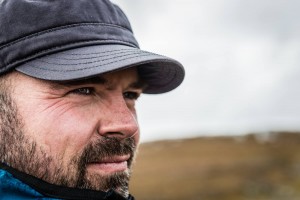by kalle | May 16, 2007 | Foto
On a very similar issue as yesterdays post. When location stamping photos it might be necessary to time-shift a large number of photos due to the clock in the camera was not correctly set. There are a number of tools to do that. I have not yet found a free graphical user interface for doing it but both ExifTool by Phil Harvey and JHead are free command-line tools. I have only used JHead so far but ExifTool can manage many more file-formats than JHead.
For EXIFTool there exists a Photoshop plugin, but I have not yet tried it.
And while writing up upon the subject on geotagging images, found this other tool called JPhotoGeoTagger that can be used to geotag images.
by kalle | May 15, 2007 | Foto, Software development
Geotagging isn’t anything really new, been around a couple of years. There are some different tools that will help you to download a track from your GPS unit and synchronize it with the timestamp from images to set positioning data in the image. Then you can place those on Google Earth or on the Flickr Map.
But what I have not been able to find is a free piece of software that will use a GPS connected to a mobile phone and generate a track to synchronize with images. So I wrote one. Now I’m looking for people who would like to give it a test to find bugs etc. The software is yet quite simple, it scans for bluetooth devices and you can select the one to connect to. Then will it start to read positioning data from it and when it gets a good position it is stored in a GPX file on your phone.
I uploaded an example from earlier today onto Flickr.
Some advices and whats needed:
Make sure flickr use your GeoTags.(via)
You need Microsoft LocationStamper, download here.
You need a mobile phone with Java and also JSR-82 and JSR-75, like SonyEricsson K750 or K800.
And you need a bluetooth GPS, I use Holux GPSlim236. Nav4All sells them quite cheap, 70â¬.
by kalle | May 12, 2007 | Dykning, Foto, Hacking, Hardware projects
Hittade lite om hur man rätt enkelt kan bygga sin egna slavblixt.
Nick Pagazani beskriver hur han byggt sin egna trigger krets för att göra en vanlig blixt till en slav blixt. Den borde funka utmärkt att använda också för att trigga Sea&Sea undertvattensblixten jag har. Bara stoppa elektroniken i en vattentät förpackning.
Annars kan man visst bygga en slavblixt av gamla engångskameror. Här finns en beskrivning och här en annan.
by kalle | May 12, 2007 | Foto
Satt och surfade runt lite på fotografering och ljust användandet av blixtar och kom då in på höghastighetsfotografering. Försökte bygga ihop MAKEs kit för ett tag sedan men hittade inte rätt delar här i Sverige så fick den inte funka. Men hittade lite mer liknande byggen nu så skall ta och studera dessa så kan man nog bygga ihop något eget.
Tex beskriver Johannes Eriksson hur han gjort här.
Matt Swann beskriver sitt bygge här.
Här var också en bra sammanställning av lite olika trigger kretsar.
När jag sökte runt hittade jag även lite kretsar för triggning av kameran.
Styrd av ljus, tex åska
Tidsstyrd enbart. Rätt koolt att låta kamera ta en massa bilder med samma intervall och sedan sätta ihop till en film.
by kalle | May 9, 2007 | Foto
 Felix berättade när han var uppe på Sylarna att han gillade ett par små slavblixtar han har. Var mycket användbara och man kunde enkelt placera ut dem där man behövde ljus. Kostade runt 400 kr st. Om jag kommer ihåg rätt sa han att han köpte dem på från Fototek men deras hemsida verkar nere. Men däremot verkar Photax ha någon liknande slavblixt för strax under 500 kr.
Felix berättade när han var uppe på Sylarna att han gillade ett par små slavblixtar han har. Var mycket användbara och man kunde enkelt placera ut dem där man behövde ljus. Kostade runt 400 kr st. Om jag kommer ihåg rätt sa han att han köpte dem på från Fototek men deras hemsida verkar nere. Men däremot verkar Photax ha någon liknande slavblixt för strax under 500 kr.
Kanske man skulle skaffa ett par sådana. Får ringa Fototek och kolla vad dom har eller maila Felix.
by kalle | Dec 18, 2006 | Foto

This was a cool and interesting illusion. Take a imaga of something, place a laptop infront and show the image and take a new shot.
Here are more examples. Another example using a mobilephone where the technique is explained in detail as well.


